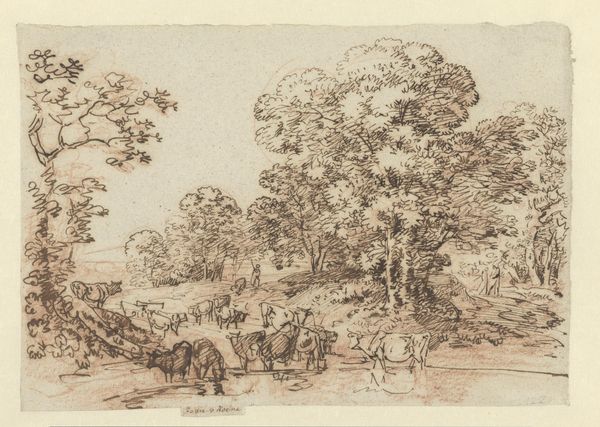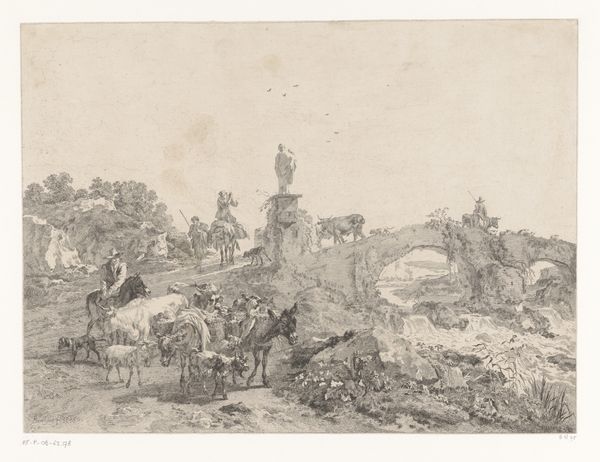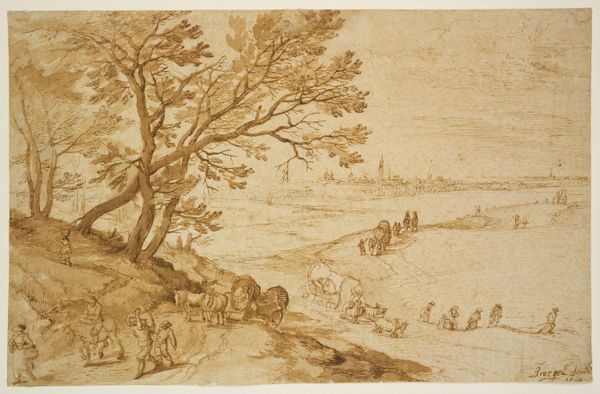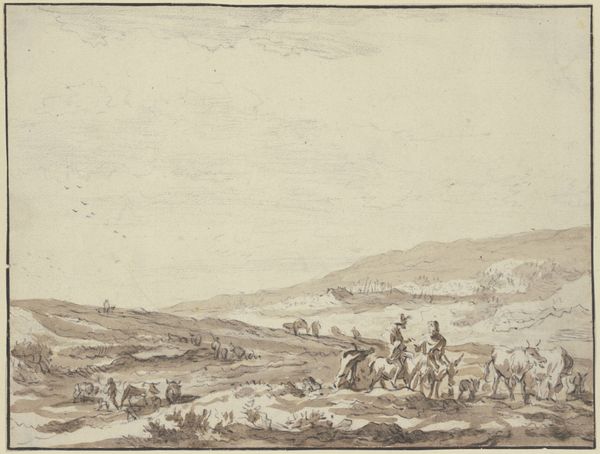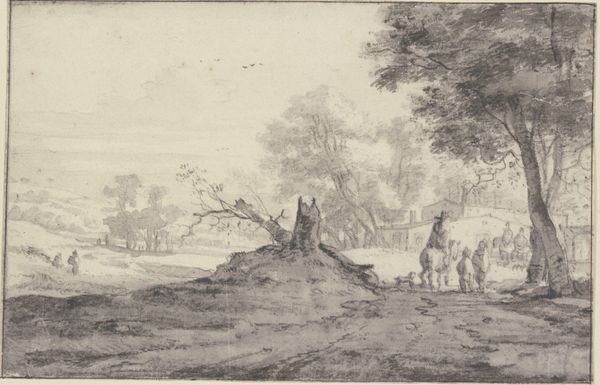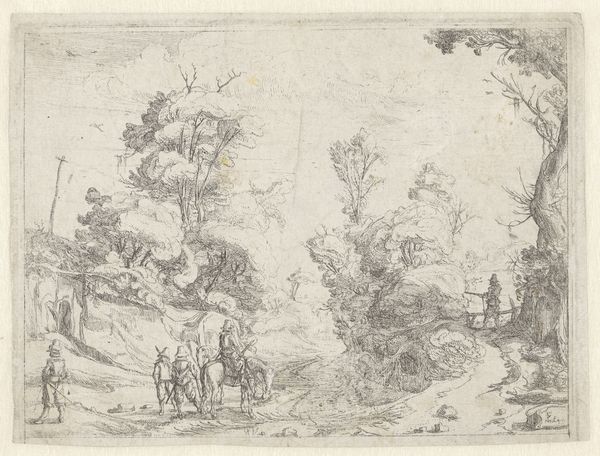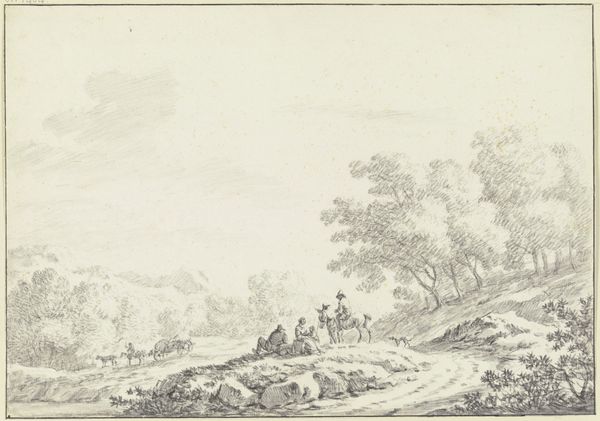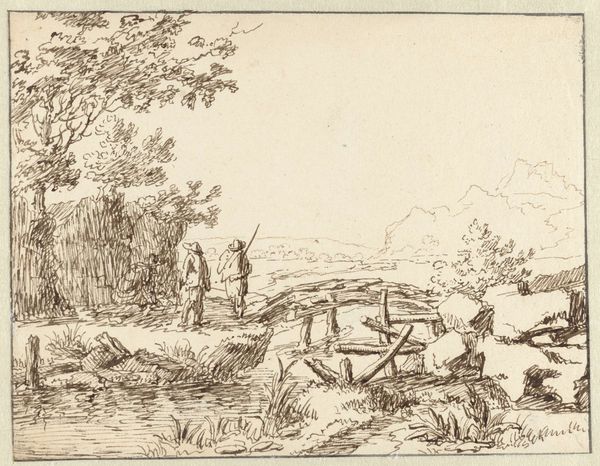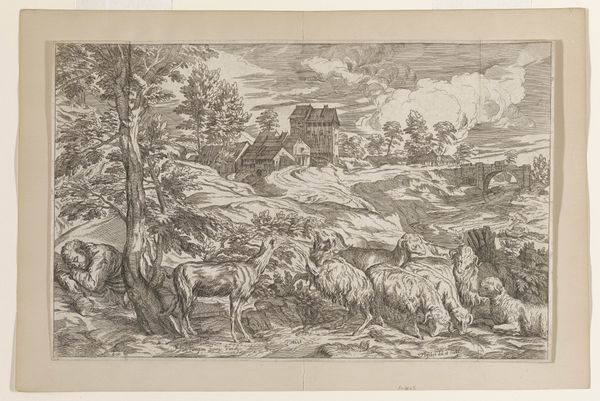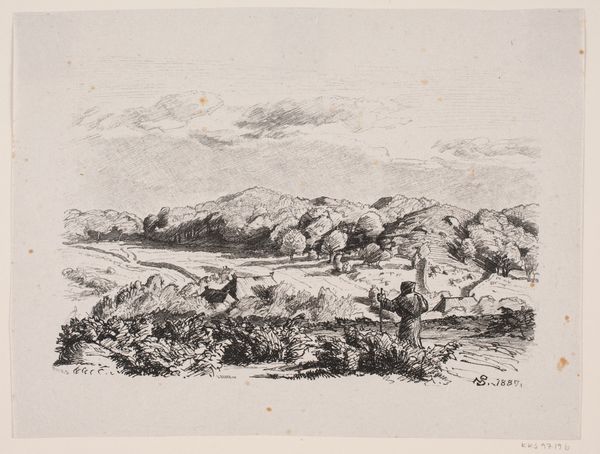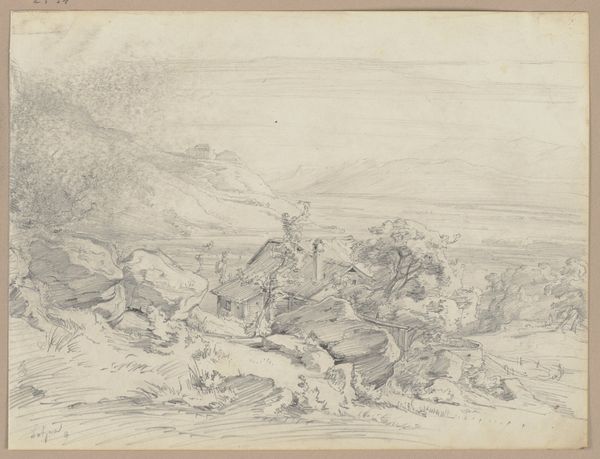
Copyright: Public Domain
Editor: Here we have "Near Florence," a pencil and graphite drawing from 1851 by Friedrich Metz, currently housed in the Städel Museum. It's incredibly delicate, almost ethereal. The textures he creates with simple pencil strokes are just…fascinating! What jumps out to you when you look at this piece? Curator: Immediately, I am drawn to the linear qualities. Notice the strategic arrangement of lines—horizontal versus vertical— and how Metz modulates their density to create tonal variation, evoking both form and spatial depth. Do you observe how the artist structures the composition around contrasting textures and the strategic application of light and shadow? Editor: Yes, the foreground is much more defined with darker, thicker lines, while the background seems to fade away, becoming much softer. It’s clever. Does the romanticism style mean there’s an emotion Metz is trying to convey through this piece? Curator: That is certainly a pertinent reading of the piece, however from a formalist point of view I can observe how the artist manipulated compositional elements, specifically the texture and value, to create the illusion of depth. Consider how Metz manipulates your gaze. From the clearly delineated foreground and winding path to the blurred background suggesting the skyline. Does this manipulation itself carry an emotional impact regardless of specific symbolism? Editor: That’s a very interesting perspective. I was so caught up in thinking about what he was depicting, I didn't consider how the composition is really driving the viewing experience itself! I see how the structure is communicating its own emotion. Curator: Indeed! It's an exploration of the potential that lines hold when crafting illusory space and form upon a two-dimensional surface, creating, even if indirectly, an experience within the viewer. Editor: This has changed how I will consider approaching art from now on. Looking past just what is shown in an artwork but also focusing on the intention behind its structure and its influence in creating meaning.
Comments
No comments
Be the first to comment and join the conversation on the ultimate creative platform.

